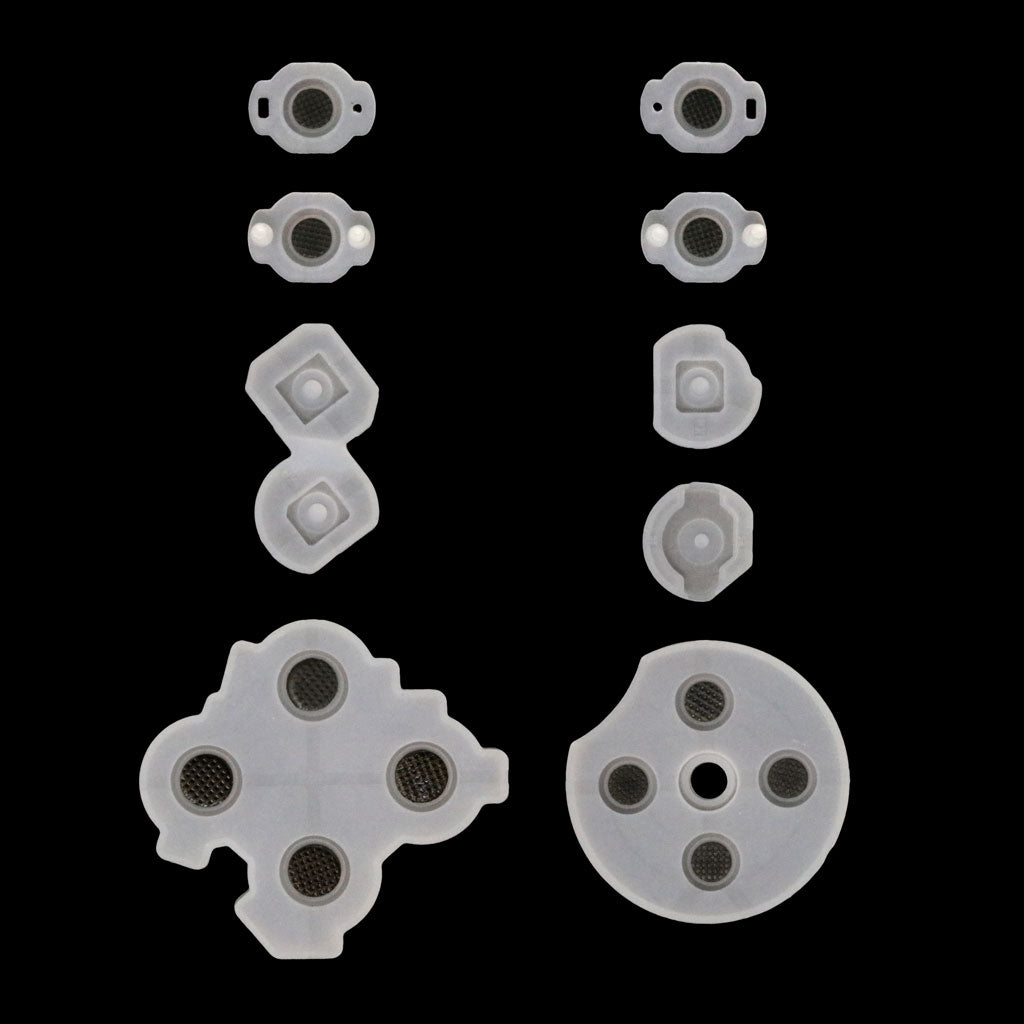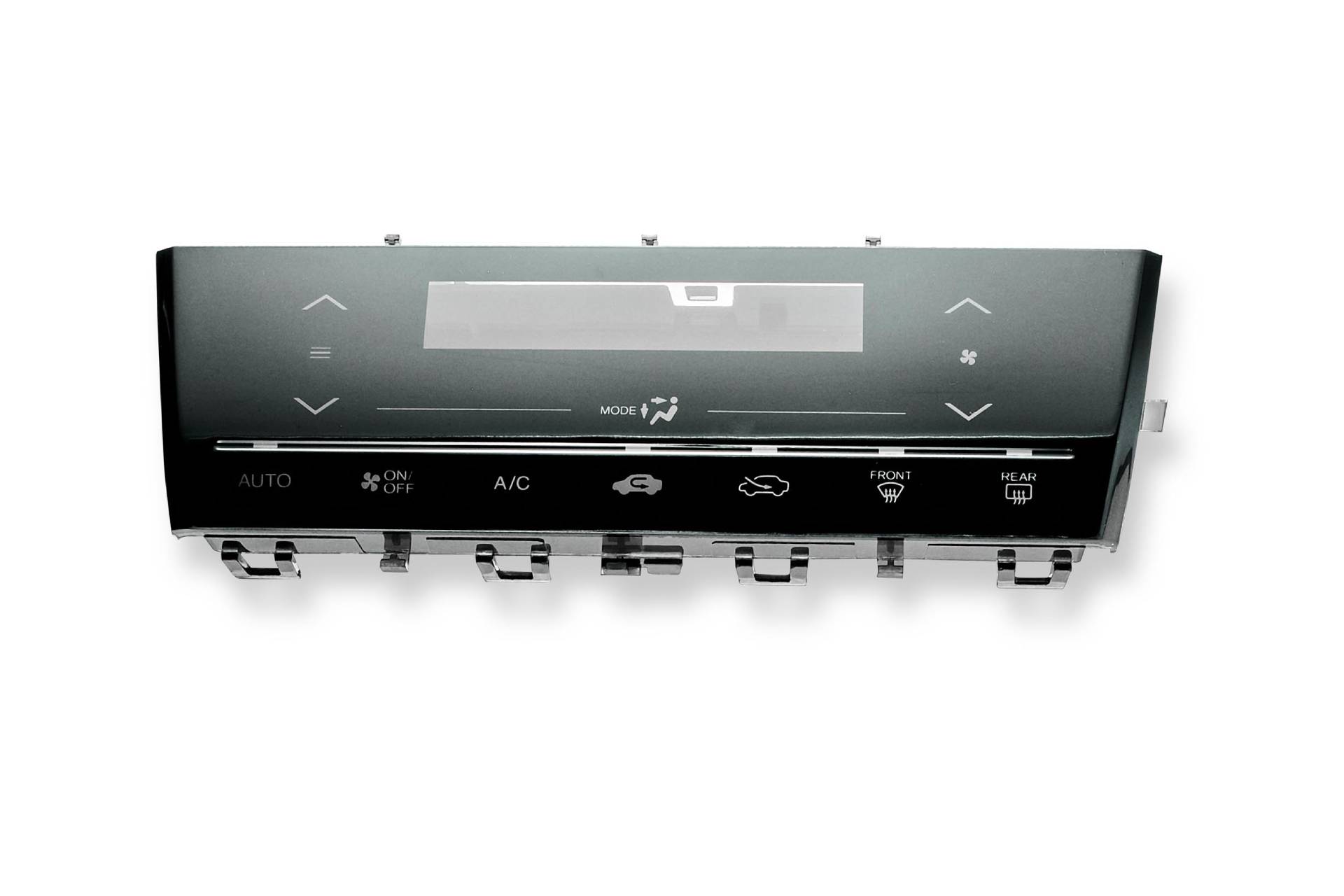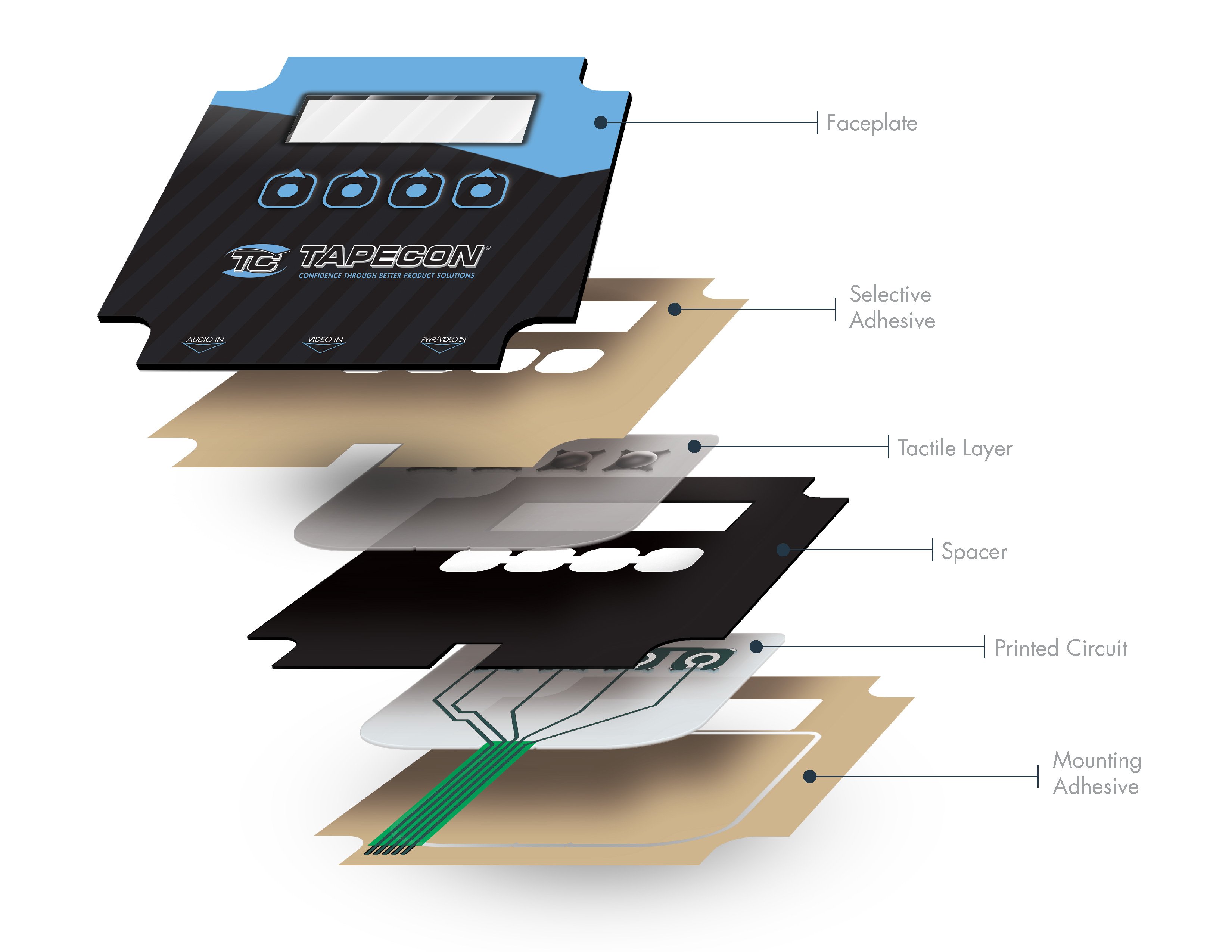Experienced Membrane Switch Manufacturer for Challenging Projects
Understanding the Relevance of Membrane Switch in Modern Electronic Devices and Their Applications
Membrane changes act as an essential element in modern-day electronic devices, offering an efficient interface for individual interaction. Their light-weight and customizable nature makes them suitable for a series of applications across varied industries. Comprehending their vital components and advantages can supply understandings into their expanding relevance. As innovation proceeds to breakthrough, the advancement of Membrane switches increases questions regarding their future applications and layout developments. What exists in advance in this dynamic area?

What Are Membrane Switches?
Membrane switches are necessary components in modern electronic devices, acting as customer interfaces that assist in communication in between users and devices. These switches include a number of layers, consisting of a graphic overlay, a glue layer, and a circuit layer, every one of which interact to produce a durable and functional interface. The layout enables for a flat, inconspicuous solution that can be customized regarding dimension, shape, and visual appearance, making them suitable for various applications, from consumer electronics to clinical tools. The responsive responses given by Membrane switches improves customer experience, while their resistance to dirt and wetness makes them ideal for challenging atmospheres. In addition, Membrane buttons can include attributes such as backlighting and printed graphics, further increasing their use. Their versatility and effectiveness make them a favored choice in industries where dependability and ease of use are critical, eventually contributing to the seamless procedure of contemporary electronic gadgets.
Trick Components of Membrane Changes
While numerous parts contribute to the functionality of a membrane button, 3 main layers play considerable roles in its layout and operation. The leading layer, commonly made from a long lasting polymer, works as the interface for individual communication, frequently featuring printed symbols and graphics. Below this is the spacer layer, which preserves the necessary range between the leading layer and the circuit layer. This spacer layer warranties that the switch activates just when pushed, stopping unintended inputs. Ultimately, the circuit layer contains conductive traces that finish the electric circuit when the top layer is dispirited. These traces can be made from various products, including copper or silver. With each other, these parts develop a durable and reputable device that is small and flexible, ideal for a vast array of digital applications, from house home appliances to medical gadgets. Recognizing these key elements is essential for valuing the overall functionality of Membrane switches.
Advantages of Utilizing Membrane Switches

Membrane Switch Production Process
Recognizing the Membrane button manufacturing process reveals the elaborate steps associated with creating these crucial parts. The process commonly starts with the style stage, where formats and specs are produced using specialized software. Following this, the visuals overlay is published on a flexible substratum, often making use of high-resolution printing strategies to assure clarity and precision.Next, the adhesive layers are used, which offer to bond the various components with each other. The circuit layers, made from conductive inks or materials, are after that published onto a different substratum. These layers are carefully straightened and laminated flooring to develop a useful switch.After assembly, the buttons undergo checking to confirm capability and toughness. Quality control steps are carried out throughout the procedure to identify and fix any type of flaws. Finally, the finished Membrane switches are packaged and planned for distribution, all set to fulfill the demands of modern-day digital applications.
Applications of Membrane Switches Over in Numerous Industries
Membrane switches are progressively utilized across various markets, especially in medical equipment and customer electronics. In the medical area, they supply trusted control user interfaces for devices that call for specific procedure. In a similar way, in customer electronic devices, these switches enhance user interaction by supplying responsive and sleek interfaces.
Medical Tools Control
Countless contemporary medical tools use Membrane switches for structured operation and enhanced individual communication. These switches provide a dependable, durable user interface for a range of applications, consisting of analysis equipment, client surveillance systems, and medical instruments. Their personalized designs enable certain layouts that can suit the distinct demands of health care experts, ensuring user-friendly navigation and effective access to crucial functions. In addition, Membrane buttons are resistant to pollutants, making them suitable for sterilized environments. The responsive responses they provide can improve customer confidence, lowering the risk of mistakes during essential medical procedures. On the whole, the combination of Membrane buttons in medical devices substantially adds to boosted operational effectiveness and person safety in medical care settings.
Customer Electronic Devices Interfaces
In the domain of consumer electronic devices, Membrane buttons play an important duty in enhancing interface across a vast array of tools. These switches are essential to products such as remotes, microwaves, and pc gaming consoles, providing a easy to use and reliable user interface. Their layout permits a seamless integration of graphics and performance, allowing makers to create smooth, contemporary looks without endangering use. Membrane buttons are likewise understood for their longevity, usually withstanding extensive use and direct exposure to numerous ecological problems. Furthermore, they can integrate functions like backlighting and tactile feedback, additional boosting the customer experience. As customer demands for sophisticated yet intuitive user interfaces expand, Membrane switches remain to be a crucial part in progressing electronic device functionality.
Layout Factors To Consider for Membrane Switches
Creating reliable Membrane switches calls for cautious interest to various factors that affect both performance and click here to read individual experience. One important consideration is the selection of materials, as they can influence toughness, responsive feedback, and visual appeal. Picking an appropriate adhesive is vital for guaranteeing lasting bond and resistance to ecological factors.In addition, the format and design of the button need to accommodate customer interaction, with switch sizes and spacing maximized for simplicity of use. The unification of graphics and labeling ought to focus on clearness and presence under different lights conditions.Consideration of electrical qualities, such as actuation force and button level of sensitivity, will enhance the responsiveness of the Membrane button. The layout ought to suit manufacturing procedures to assure cost-effectiveness and timely manufacturing. In general, a well-balanced style boosts both the individual and the functionality experience of Membrane switches in contemporary electronic devices.

Future Fads in Membrane Switch Technology
As innovation proceeds to evolve, Membrane switches are positioned to integrate new innovations that will boost their functionality and application in different fields. One considerable trend is the consolidation of durable and flexible materials, which will certainly raise the life expectancy and integrity of these switches. Improved surface area textures and adjustable graphics are additionally prepared for, enabling directory even more user-friendly customer interfaces.Moreover, the integration of clever modern technology, such as touch-sensitive surface areas and haptic responses, is expected to improve individual interaction, making Membrane changes a lot more receptive and appealing. Additionally, breakthroughs in published electronics will certainly make it possible for more complicated circuitry within thinner profiles, further expanding design possibilities.Sustainability will certainly likewise play an essential function in future advancements, as makers check out environment-friendly products and manufacturing processes. Overall, these trends will certainly guarantee that Membrane switches over remain appropriate and vital in a increasingly electronic and interconnected world.
Regularly Asked Questions
Just How Do Membrane Switches Over Compare to Traditional Mechanical Switches?
Membrane changes offer benefits over typical mechanical buttons, including decreased size, lighter weight, and boosted longevity. They generally provide a secured surface, boosting resistance to dust and dampness, making them excellent for diverse applications.
What Materials Are Frequently Used in Membrane Switch Building And Construction?

Can Membrane Switches Withstand Extreme Environmental Issues?
Membrane buttons can withstand extreme ecological problems, depending on their layout and materials. High-quality buildings often feature resilience against temperature level variations, moisture, and exposure to chemicals, making them appropriate for various requiring applications across markets.
The Length Of Time Do Membrane Switches Over Generally Last Prior To Failing?
Membrane switches over generally display a life-span ranging from 1 to 10 million actuations, depending on elements such as usage frequency, environmental problems, and producing quality. Routine upkeep can prolong their durability and functional reliability significantly.
Are Membrane Changes Personalized for Specific Applications?
Membrane buttons are undoubtedly personalized for details applications. They can be tailored in performance, layout, and dimension, enabling makers to fulfill distinct user demands and enhance item appearances while preserving operational performance and sturdiness. Membrane buttons are crucial elements in contemporary electronic devices, offering as user interfaces that promote interaction in between individuals and tools. The tactile this post comments supplied by Membrane switches over enhances user experience, while their resistance to dirt and wetness makes them optimal for challenging settings. The incorporation of graphics and labeling ought to prioritize clearness and presence under numerous lights conditions.Consideration of electric features, such as actuation pressure and button level of sensitivity, will certainly improve the responsiveness of the Membrane switch. Boosted surface appearances and personalized graphics are also anticipated, enabling for even more instinctive customer interfaces.Moreover, the assimilation of smart innovation, such as touch-sensitive surfaces and haptic responses, is anticipated to enhance individual communication, making Membrane changes more receptive and interesting. Membrane changes deal advantages over traditional mechanical buttons, consisting of decreased size, lighter weight, and boosted longevity.